YOUR TRUSTED PARTNER IN SECURITY AND COMPLIANCE.
At LSA, we prioritize the safety of our data by maintaining a comprehensive information security program aligned with all federal, state, local and client-driven compliance and regulatory requirements. As industry leaders, we ensure your business is supported by a partner you can trust, delivering secure and reliable interpretation and translation solutions tailored to your needs.
WE ARE COMMITTED TO YOUR SECURITY.
Partner with LSA and experience the confidence of working with a compliance-driven company. We audit regularly to ensure compliance with federal and state regulations including HIPAA, CMS-Fraud Waste and Abuse, Conflicts of Interest, Anti-Kickback Statute, False Claims Act, Federal Government GSA requirements, and other general and industry-specific compliance standards.

WE ARE COMMITTED TO YOUR SECURITY.
Partner with LSA and experience the confidence of working with a compliance-driven company. We audit regularly to ensure compliance with federal and state regulations including HIPAA, CMS-Fraud Waste and Abuse, Conflicts of Interest, Anti-Kickback Statute, False Claims Act, Federal Government GSA requirements, and other general and industry-specific compliance standards.

Anti-Kickback Statute
HIPAA

False Claims Act
Conflicts of Interest

CMS-Fraud Waste and Abuse
Federal Government GSA Requirements

Other General and Industry Specific Compliance Standards
Need more information?
Fill out this form to get in contact with our team.
"*" indicates required fields


WORK WITH EXPERT INTERPRETERS WHO KNOW SECURITY.
LSA’s interpreters are carefully vetted, possess sector-specific experience, and are fully trained on the handling and disposal of sensitive information. This includes annual training on PHI and PII, compliance with Federal and State laws, HIPAA, and other regulatory standards. Guidance also extends to the security of physical and electronic devices, confidentiality, and proper handling of sensitive information.
OUR SECURITY POSTURE.
- Resilient Architecture
- Separation of Environments
- Cloud Security Posture Management
LSA employs a robust and multi-layered approach to network security, ensuring data protection, risk mitigation, and compliance with best practices and standards.
Below is a detailed breakdown of our network security measures across three critical categories:
- IPS/IDS
- Next Generation Firewall
- Web Filtering
- Individual and nominative accounts
- Least Privilege and need-to-know Principles
- Conditional Access and Geofencing
LSA adheres to a structured software development life cycle (SDLC) that integrates secure practices at every stage to ensure the integrity, confidentiality, and availability of critical systems and data.
Below is a breakdown of the SDLC, focusing on the requested categories:
- Secure Development Requirements
- Secure Development Policy
- Code Reviews
LSA’s robust risk management framework integrates these categories to ensure that risks are identified, assessed, mitigated, and monitored effectively.
- Risk Assessment
- Cyber Insurance
- Vendor Risk Management Program
- Mobile Device Management Solution
- Device Encryption
- Extended Detection and Response
- Business Continuity Plan
- Business Continuity Exercise
- Redundancies and Failover Capabilities
- Segregation of duties
- Dedicated Security Team
- Access to Third Party Security Resources
LSA’s Human Resources security measures are designed to safeguard sensitive information and ensure compliance with industry standards and regulations. The key elements of LSA’s HR security include:
- Policies and Procedures
- Background Checks and Onboarding Practices
- Access Management
LSA affirms its commitment to privacy and regulatory compliance across these frameworks to safeguard client and consumer data effectively.
- Privacy Policy
- Business Associate Agreements (BAA)
- California Consumer Privacy Act (CCPA)
- General Data Protection Regulation (GDPR)
- LSA Cares Program
- Community Engagement
- Commitment to Diversity and Inclusion
- LSA Cares Program
- Community Engagement
- Employee and Supplier Awareness
WHAT OUR CLIENTS SAY ABOUT US.
Lori Stokes – Aultman
Working with LSA has been a dream. Not only are we able to get quality interpreters in rare languages quickly, but LSA is amazing at creating a custom experience for our unique needs. I really love that they have dedicated teams that all work with us and respond quickly.
Kathy Marine – Montgomery County Early Intervention
LSA has provided Early Intervention reliable interpreting support for more than a decade. LSA has made its services easy for staff to schedule, and their interpreters have been professional and sensitive, enabling our practitioners to deliver services and provide coaching support effectively to our limited-English-speaking parents. We have been happy to partner with a local company to make our program accessible to all eligible children in Montgomery County.
Beth Baker – Upstream
The LSA Team is friendly and very knowledgeable. LSA provides excellent customer service and compliant options that allow us to provide equally remarkable experiences for all of our patients. Their services are highly recommended.
Barb Gordon – Guthrie
Khlecka Banks – Flagstar Bank
The LSA partnership has been phenomenal. Whether it’s managing our day-to-day operations or contracts LSA goes above and beyond to meet our business needs. In addition, LSA stays abreast of changes in our market and is ready to pivot to accommodate those changes. With the LSA partnership we have been able to service over 15,000 language customers annually. The partnership with LSA has been so great that we went from onboarding 1 department to 12 as well as adding additional products.
Hackensack Meridian Health
Language Services Associates has been a reliable partner for many years for our in-person and virtual interpreting needs. LSA provides efficient systems, well-trained and responsive coordinators, and quality interpreters. They help us create an inclusive environment for our patients at every level of care, and in over 25 different languages.
Shelby Gaskin – Rayus Radiology
Rayus Radiology has worked with LSA for several years, it has been a great partnership. Their offerings and services have grown and expanded with us as our business has. They have always been right there to assist with solutions and connect us with the latest technology to make the translation experience suit our needs as best as it can.
Cheryl Stroud – American Customer Care
LSA has been a preferred partner over the years. In our business, it is essential that we communicate with our customers effectively and LSA allows us to do so in any language.
Jennifer Harris – Public Health Management Corporation
Our program has utilized LSA for the over five years and it has been a tremendous asset to the families and providers we serve. Whether having documents and applications translated, securing a LIVE translator for virtual meetings and/or having an Interpreter on the line for a frantic parent seeking services. We really enjoy access to the LSA Web portal which makes obtaining services a smooth process and keeps us up to date on services used daily, monthly and yearly. LSA has been time efficient and accommodating to the growing needs of our program.
Karen Marshall – Maryland Surgeons
Our medical practice has used LSA for several years, and we have been pleased with their service from day 1. LSA is the best!!! We use them several times a week. We are always able to get a phone interpreter quickly and it is so easy to go online and request an in-person interpreter. Customer service is quick with resolving issues. LSA is professional and the interpreters are very knowledgeable and professional!!!
Tra Bui – Compspec Inc.
CompSpec have been partners with Language Services Associates since 2006 for our telephonic and translation needs. LSA is a reliable resource for us for our language service program. We truly appreciate the assistance provided by our dedicated account manager, Ashley Butler. She has provided us with training tools for our staff, robust reporting, industry trends and more. We appreciate the level of communication and attention that is afforded to us. What impressed us the most is the continued high level of customer service Ashley, and her team has provided for us throughout the years. Language Services Associates is a true partner.
Jane Bortz – DiD Agency – Part of the LUCID Group
I have had the pleasure of working with Molly and her colleagues over the past several years. The jobs have spanned many of my clients/brands and have been on a variety of asset types. We are always confident that the LSA team will deliver accurate translations and quality updated design layouts. My clients have been very pleased with the end results. We always turn to LSA first when we have new translation requests and value their partnership on the jobs.
Kelly A. Brown -ACESS Financial Management Services Illinois
It has been an absolute pleasure to work with Language Services Associates for the past 10 years.
The team we work with is professional, communicative, honest, and always keeps us informed.
They are responsive and finish projects on time, every time.
Furthermore, their translations are accurate, and our consumers appreciate that we can cater to their needs so specifically.
Holly Kettle – Erie Shores Healthcare
Language Services has been very easy to work with. LS provides our hospital with many options to help improve communication with our multi-cultural community.
Terri Sojourner – Einstein
Einstein Health Network and Language Services Associates have been partners for language interpretation since 2008 for telephonic and on-site interpreting. With the large number of languages available, over 230 languages, LSA can provide support to EHN for the very diverse population that walk through our doors. Einstein Health Network continues to be impressed with the level of attention and customer service offered by LSA
Carlos Olvera – Rush University Medical Center
Since 2008, LSA has played an integral part of RUSH Interpreter Services. In addition to their exceptional language services, LSA’s client support team has been consistently attentive and accommodating. They are always ready to address any concerns or inquiries promptly.
Gabriela Salazar – GE Appliances ( A Haier Company)
Our recruiting team for production has been working with LSA for a over a year and have had a great experience with their translation services. When our relationship started with LSA, we met with a team who listened to our needs, what we wanted to do & what was important to us. It was great to work with a team of professionals who patiently explained the process, specific guidelines on what they needed from us to best support our translation needs. We had large projects in the beginning, but the turnaround time was incredible. Even now with our smaller projects, the quality and work continues to be of high caliber, so the consistency of good work continues to be the same. We highly recommend this company.
Denise Haegele – LIVINITI (formerly Southern Scripts)
Excellent Customer Service: LSA is extremely knowledgeable, courteous, and dependable. We have always received prompt and efficient service from their entire team. We could not be happier with their level of commitment and dedication to all projects large and small.
Beth Baker – Upstream Rehabilitation
Our company has had a very long-standing relationship with LSA. We started when we were a small physical therapy company with less than 100 clinics, and now have a contract that includes 1200 clinics and growing, after merging into a larger out-patient system that serves 27 states. Our clinics utilize a wide range of services—telephone, on-demand video, scheduled video, and face-to-face interpreter services, and we have had very few issues. Any issue we have encountered has been promptly and thoroughly investigated and addressed by our Account Manager and the Client Experience Team. The Team at LSA will provide “large-company service” with a “small-company feel.
Evan Lee Ferrand – VCU Health System
Working with LSA has been a positive experience over the past 5 years of having their services tailored to our particular needs from clinical coverage for face-to-face interpreters, coordinating virtual interpreters for languages of lesser diffusion, and being essential in helping us create a bilingual staff assessment for our clinical team members. They’re network of interpreters have helped us meet some of our local talent for language services in the area that we would have not otherwise met. Our account managers have consistently checked in on us to make sure that our satisfaction was prioritized, and if there were any gaps in our operations that they felt they could develop, they would commit, communicate, and innovate. Service represents the company’s values which is success, communication, and development.
Randall Brown – Detroit Medical Center
My experience with LSA has been awesome; from the promptness of the LSA team with all types of concerns to the comprehensive usage of the product. LSA offers so much more but the most significant attribute is the professionalism and friendliness of the LSA team. LSA really makes my job as an ADA coordinator easier.












